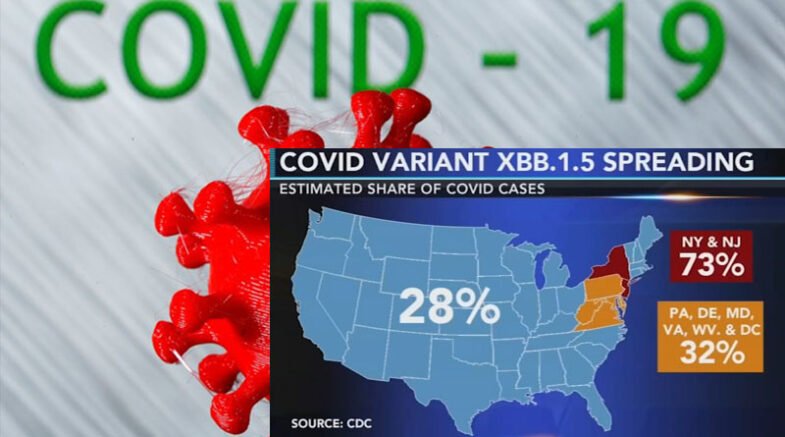“It almost certainly will dominate the world.” Right now, I can’t think of a single competitor. “Everything else is incomparable,” says Yunlong Cao.

According to projections from the United States Centers for Disease Control and Prevention (CDC) in Atlanta, Georgia, the XBB.1.5 subvariant now accounts for approximately 28% of United States Coronavirus cases, and its prevalence is increasing globally.
It appears to have quickly outcompeted a slew of other immunity-dodging variants that were expected to circulate alongside it this winter in the Northeastern United States.
New year, new variant. Just as scientists were grappling with the alphabet soup of SARS-CoV-2 variants circulating worldwide—your BQ.1.1, CH.1.1, and BF.7—one lineage appears to be rising to the top, thanks to an unusual new mutation.
“It almost certainly will dominate the world.” Right now, I can’t think of a single competitor. “Everything else is incomparable,” says Yunlong Cao, an immunologist at Beijing’s Peking University, whose team is investigating the properties of XBB.1.5 in the lab.
Scientists warn that the impact of XBB.1.5 in the United States and elsewhere is still unclear. Due to the high immunity built up from previous waves of coronavirus and vaccinations, particularly recent boosters for individuals most at risk of severe disease, the variant may not cause a significant increase in infections or hospitalisations in many countries.
Even if XBB.1.5 does not cause large COVID-19 waves, researchers say it is critical to closely monitor the lineage. The subvariant has a rarely seen mutation that might enhance its infectivity and create an opportunity for further evolutionary gains.
XBB.1.5 is an offshoot of a SARS-CoV-2 variant called XBB.2 that began spiking in 2022. XBB’s spike protein has a suite of mutations that boost the variant’s ability to evade antibodies. A rarely seen amino-acid change, called F486P, in the spike protein helps to surmount that shortcoming.
The CDC estimates that XBB.1.5 is the second most common variant of coronavirus in the United States, comprising 28% of cases nationally and upwards of 70% in the northeast. Moritz Gerstung, a computational biologist at the German Cancer Research Centre in Heidelberg, estimates that cases of the variant are doubling roughly every week.
What is unclear is whether such growth will be sustained or whether the variant will significantly increase infections, according to Gerstung. BQ.1 and BQ.1.1 appeared poised to generate significant waves, only to fizzle out in Europe and North America. If this happens with XBB.1.5, the lineage may end up silently replacing other variants in some countries without causing a significant increase in cases.
Jennifer Surtees, a biochemist at the University of Buffalo in New York, wonders if researchers are exaggerating the spread of XBB.1.5 in the Northeastern United States. The variant has become more common in the sequences her team handles in western New York, but she hasn’t seen the meteoric rise in XBB.1.5 genomes that labs in New York City are seeing.
Gauging XBB.1.5’s impact might not be straightforward, owing to the drop-off in testing for COVID-19, Surtees says. Factors such as a cold snap in the Northeastern United States and holiday gatherings could partly explain the variant’s apparent surge, he says. “We have no idea how many cases are really out there,” another bioinformatician adds.
XBB.1.5 is vastly more transmissible than other circulating variants thanks to the addition of the F486P mutation, so there is currently little evolutionary pressure on the lineage to change further. “We are going to see a lot of new mutations that we have never seen before,” says Cao.
